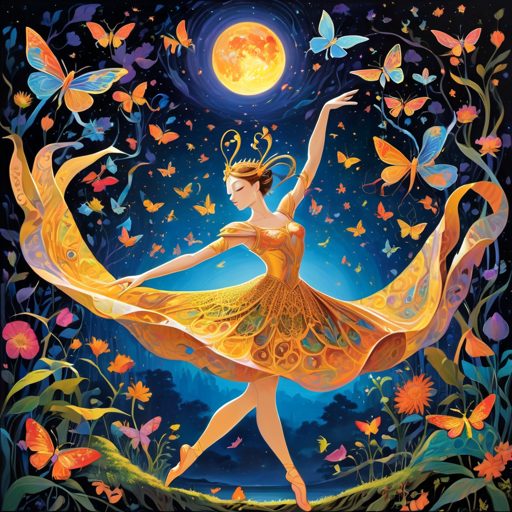
Science Explores Phonotaxis: Sound to Motion!
Recommended for Acoustics
In the enchanting realm where nature and science intertwine, a mystical dance unfolds. Every evening, as the golden hues of sunset give way to the silken darkness of night, a symphony of sounds fills the air. Crickets click, and frogs croon, each note weaving the intricate tapestry of life’s eternal ballet.
Yet, behind this seemingly random concerto, lies the profound dance of phonotaxis—a phenomenon where animals move in response to sound. A dance of survival and allure, marked by the intricate steps of attraction and repulsion.
In this story, we delve deep into this enigmatic world, uncovering the silent yet powerful influence of sounds on the mystical dance of nature’s creatures. This dance is choreographed by the unseen yet ever-present hand of science. Explore the mystery as we step into a world where sound and motion are forever entwined in the eternal dance of existence.
Nature’s Silent Ballet (audio)
The Song of Nature
The Mystery of Sounds
In the midst of the enthralling evening, when the sun paints the sky with hues of gold and crimson, we often hear a symphony of sounds. A harmonious melody composed by crickets, frogs, and various other creatures of the night. To some, these sounds may appear random or even annoying.
Yet there is a profound reason behind these mystical echoes. It is a dance between sound and motion, orchestrated by the silent conductor we call “Science”.
Phonotaxis Unleashed
Phonotaxis, a term many might be unfamiliar with, is the movement of an animal in response to a sound. It’s like a hidden dance, guided by the sounds that weave through the air, invisible yet impactful. Science has unraveled this enigmatic behavior, predominantly observed among crickets, frogs, moths, and toads. It paints a picture of a world where sound influences motion, creating a ballet of nature, harmonious yet unsung.
Positive and Negative
There exists a duality in phonotaxis – positive and negative. Positive phonotaxis is akin to a magnetic pull, a force of attraction. It happens when females of species like crickets and frogs are drawn towards the alluring sounds made by the males.
In contrast, negative phonotaxis acts as a warning, repelling creatures when the ominous sound of a potential predator graces their ears. It’s a dance of attraction and repulsion, choreographed by the enigmatic hand of Science.
The Echoing Warning
Nature’s Alarm
Nature, in its boundless wisdom, has equipped its children with tools for survival. In the world of crickets, the use of low-intensity ultrasound, typically associated with bats, triggers their innate sense of danger. It is here that Science reveals its role as not just a silent observer but a guardian.
Every sound, every motion is a testament to the invisible threads of survival woven intricately by the hands of Science.
The Geckos’ Strategy
In 1984, an intriguing discovery marked the annals of Science. Mediterranean house geckos, small yet astute, used positive phonotaxis to their advantage. The fields, their hunting grounds, echoed with the species-specific sounds of male decorated crickets, each call acting as a beacon, drawing the geckos closer to their unsuspecting prey.
A Predator’s Feast
Like a skilled hunter following the haunting melodies through the fields, the geckos were led to the burrows of female crickets. There, in the silent shadows, a predator-prey dance ensued. It was orchestrated by the unseen hands of Science, proving yet again that in the natural world, sound and motion are intricately connected, painting a canvas of life, death, and the eternal dance of survival.
The Dance of Survival
Nature’s Melody
In the soft embrace of the evening, as stars twinkle like distant dreams, the click of crickets weaves a melody that tells tales of life’s eternal dance. Each sound, each movement is an intricate step in nature’s ballet. Here survival and Science dance in unison, painting a living masterpiece of resilience and adaptability.
The Call of the Wild
To the untrained ear, the sounds of the night may appear random, yet there exists a rhythm, a melody that guides the dance of life. Frogs croaking, crickets clicking, each sound is a note in nature’s symphony. It’s through Science that we begin to unravel this mysterious dance, stepping into a world where every echo is a call, and every movement, a response.
The Eternal Dance
As we immerse ourselves in the enigmatic world of phonotaxis, we realize that the dance of life is influenced by sounds, as much as it is by the rhythms of the heart. Every echo, every motion is a silent hymn of existence, woven by the intricate hands of Science. In this dance, we find a harmony that transcends the seen and unseen, echoing the eternal rhythm of life and survival.
Similar Stories
Curious Times is a leading newspaper and website for kids. We publish daily global news aligned to your learning levels (also as per NEP 2020): Foundational, Preparatory (Primary), Middle and Senior. So, check out the News tab for this. We bring kids’ favourite Curious Times Weekly newspaper every weekend with top news, feature stories and kids’ contributions. Also, check out daily JokesPoke, Tongue Twisters, Word of the Day and Quote of the Day, kids need it all the time.
Curious Times News Program for Schools for FREE. Over 5,000 schools and teachers from all over the world have joined our programme so that students and teachers can get FREE Educative Newspaper. Here, kids can take part in world events and win prizes and certificates for free through their schools.
Moreover, schools are sharing important School News, like interviews with the principal, notices about new students, contests, and results, not just on social media but also on a news website for kids and other schools.
Thus, do not wait any further, sign-up for your school for FREE.
The following social media platforms allow you to communicate with us: WhatsApp, Instagram, Facebook, Youtube, Twitter, and LinkedIn.
0 (Please login to give a Curious Clap to your friend.)
